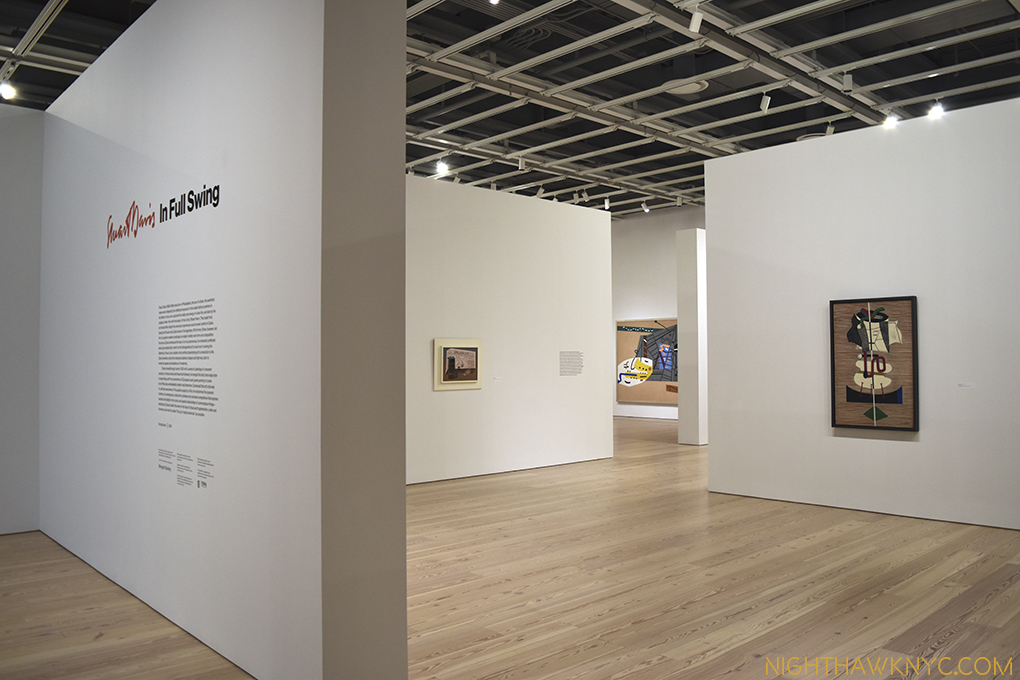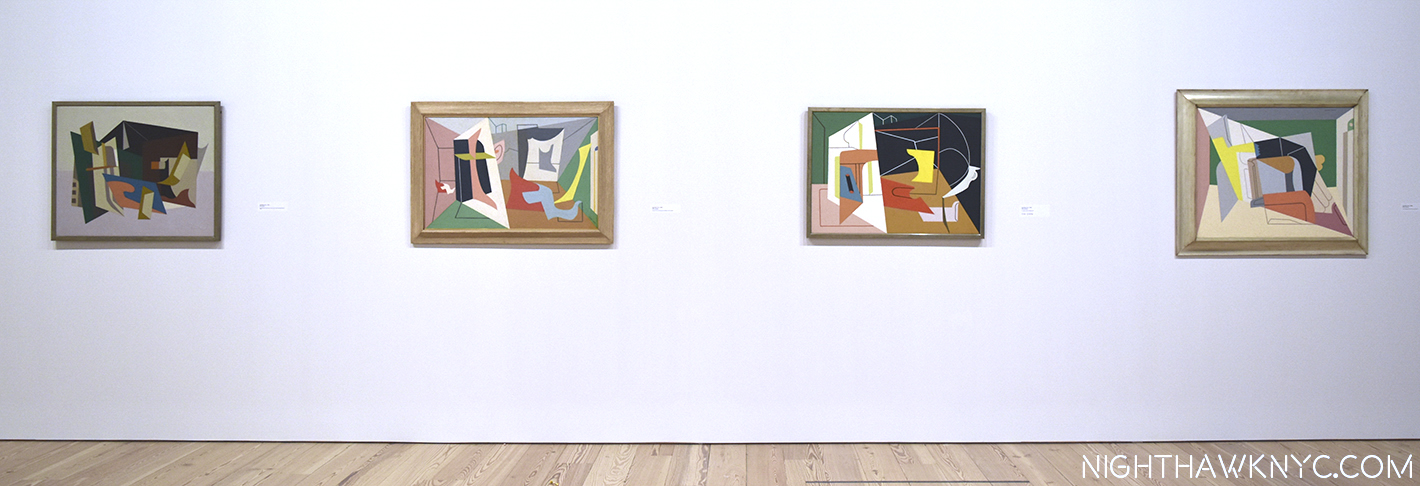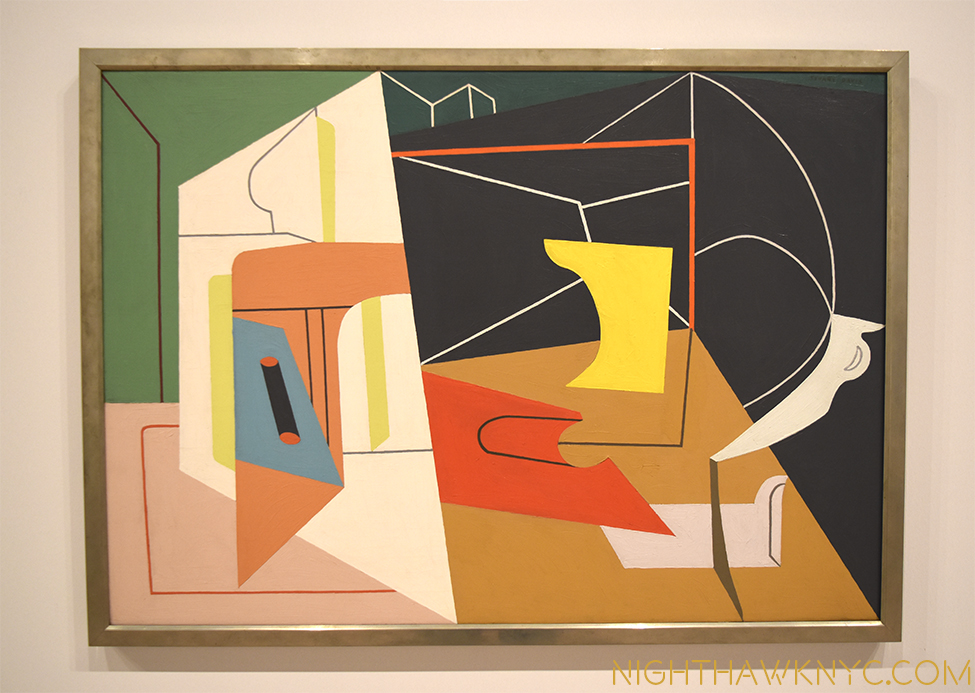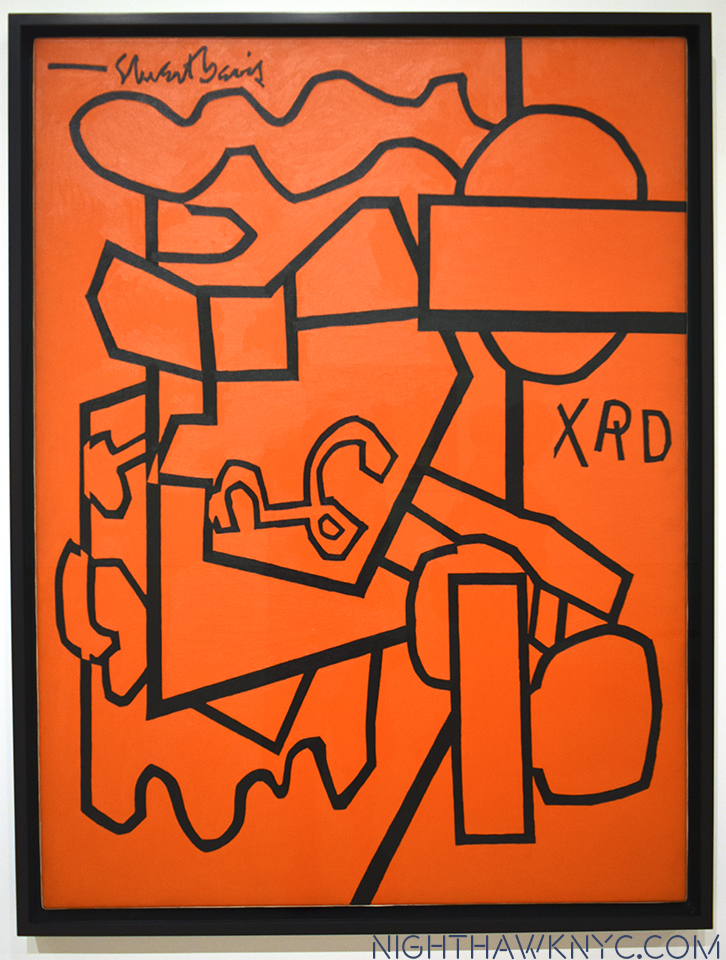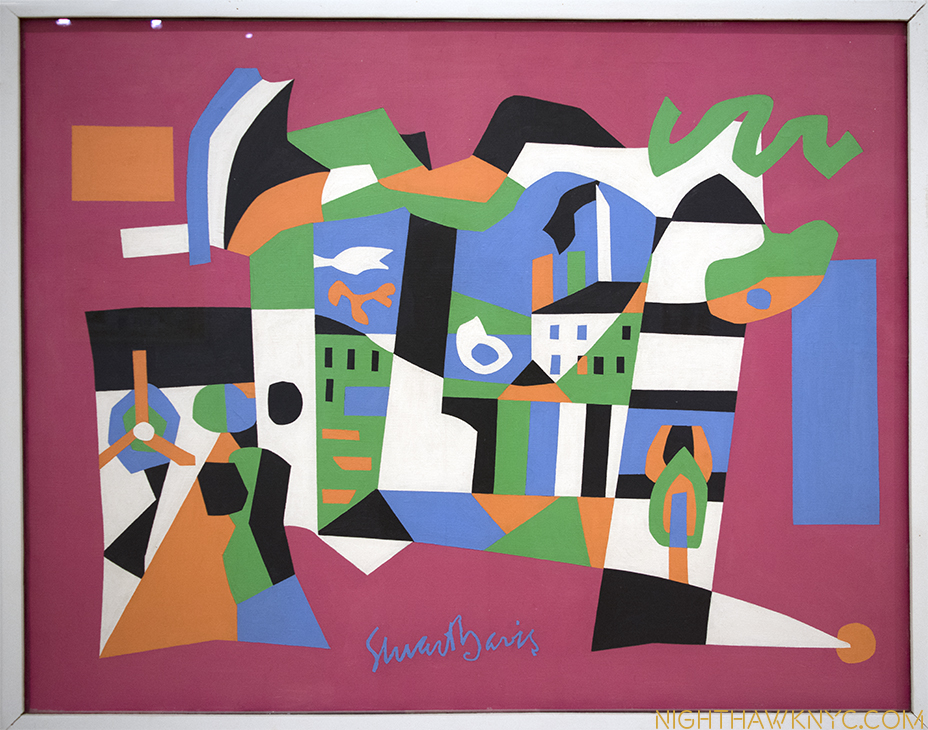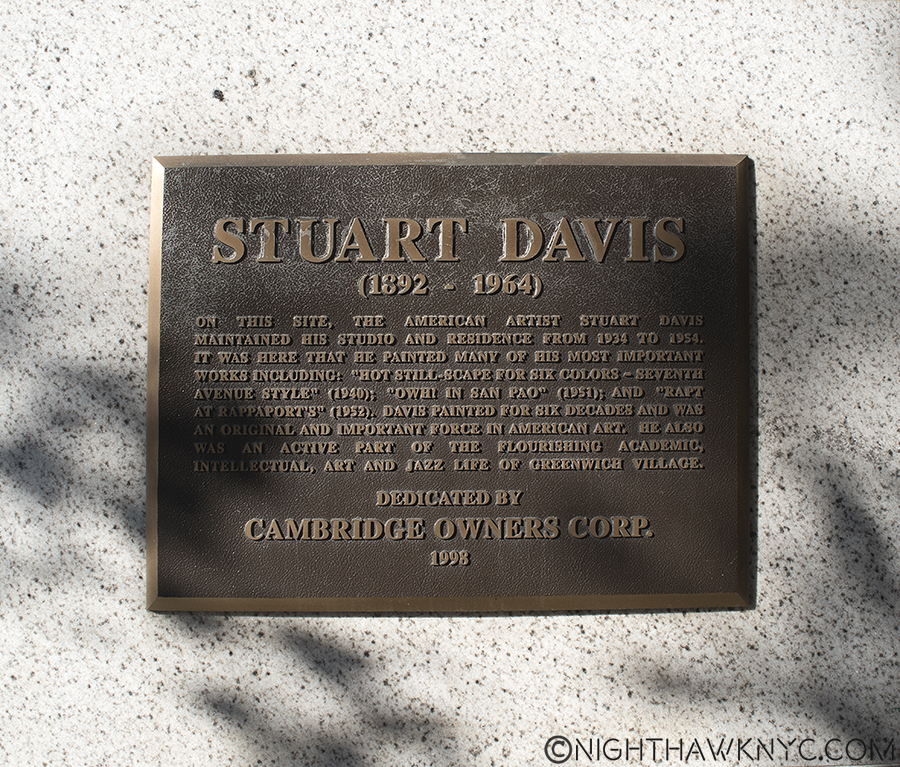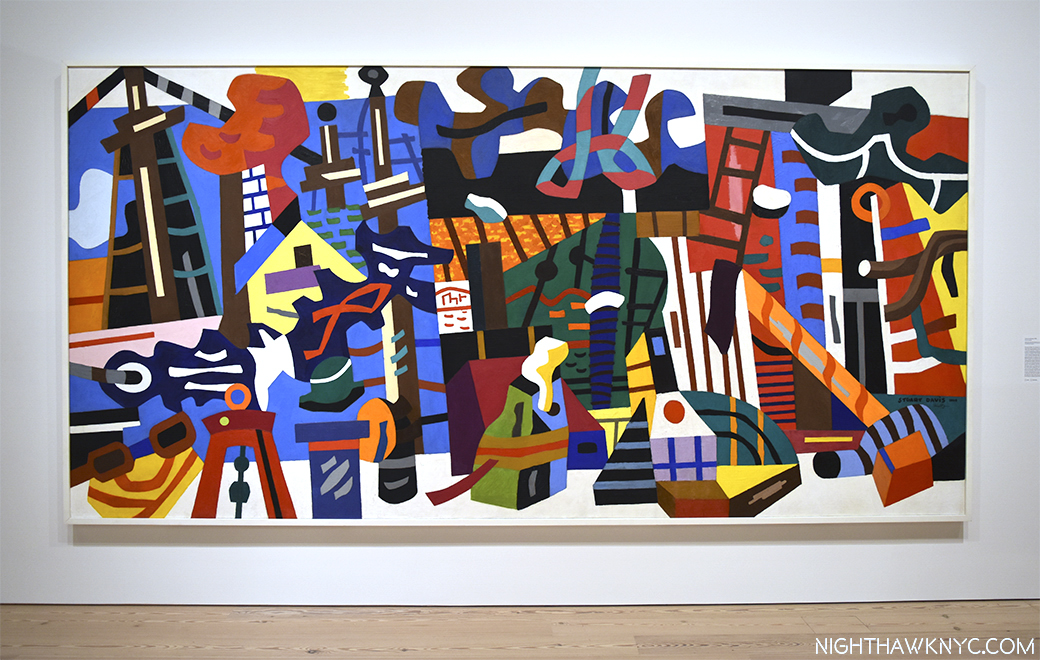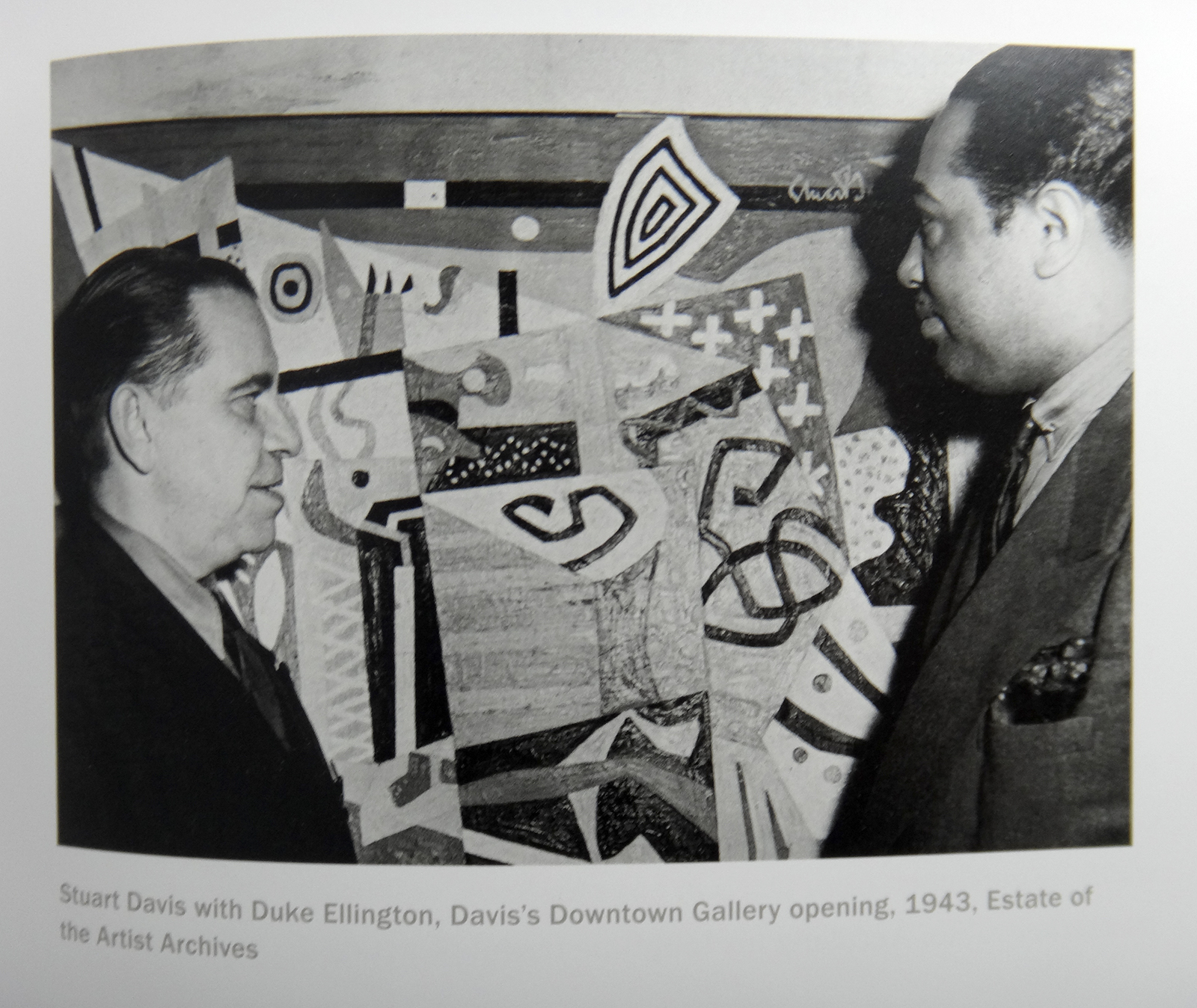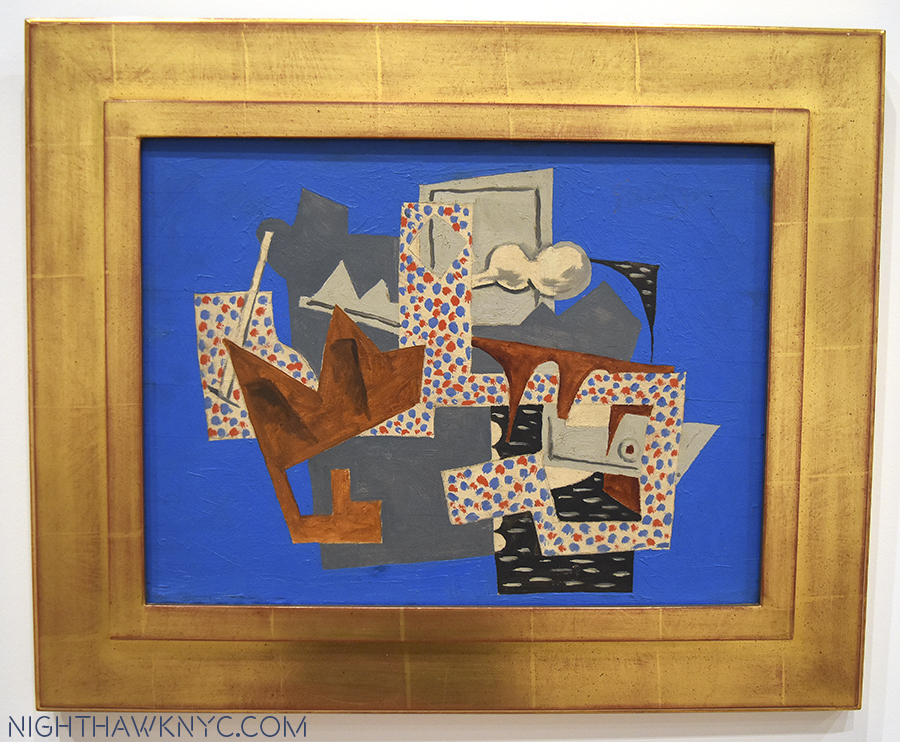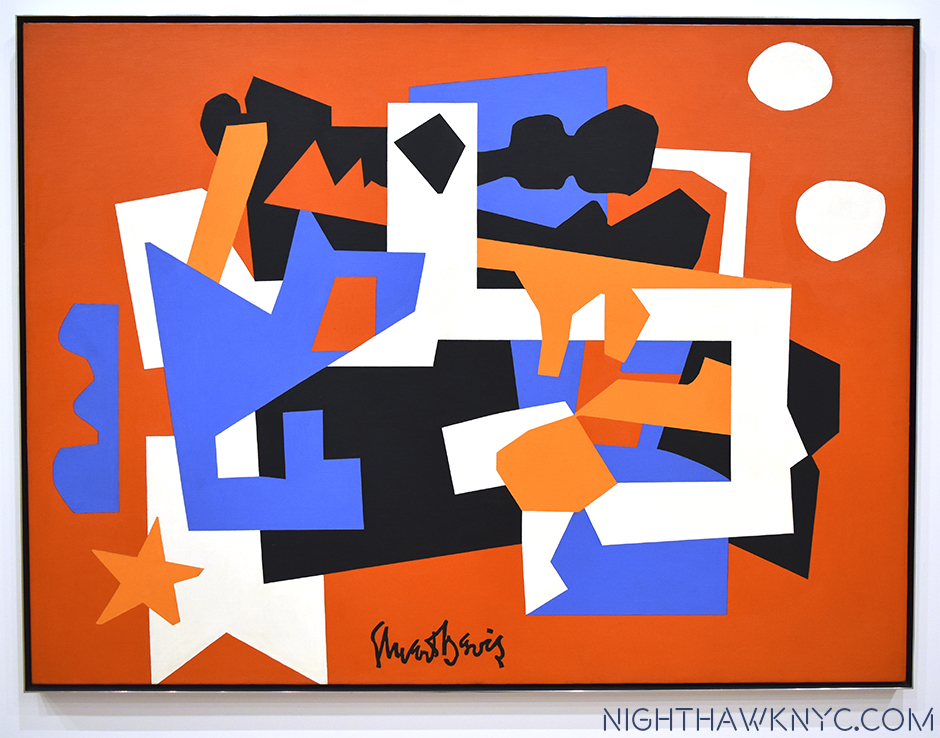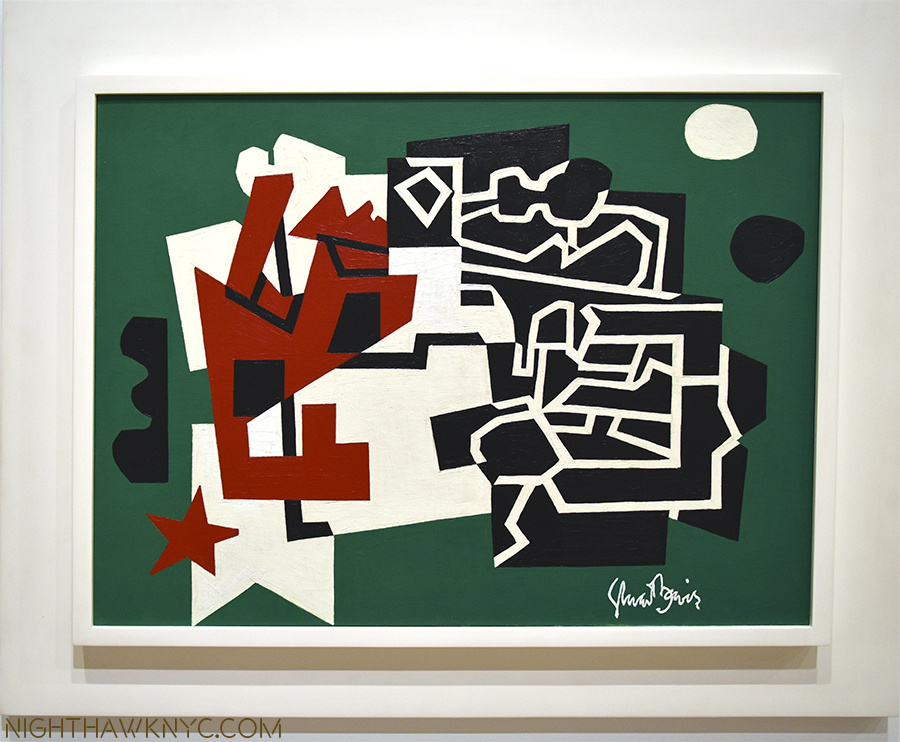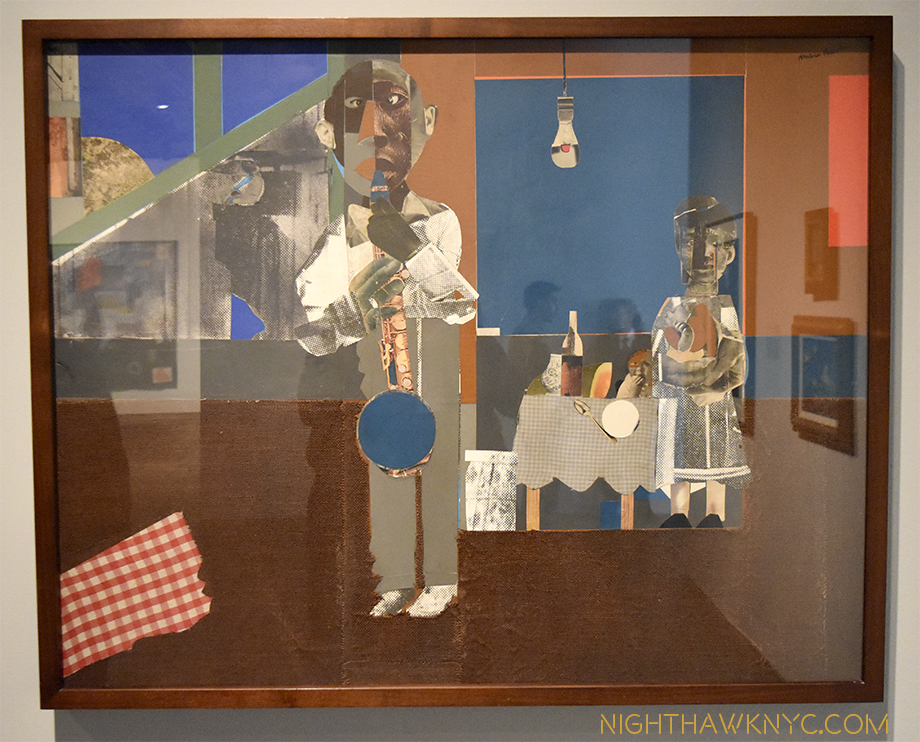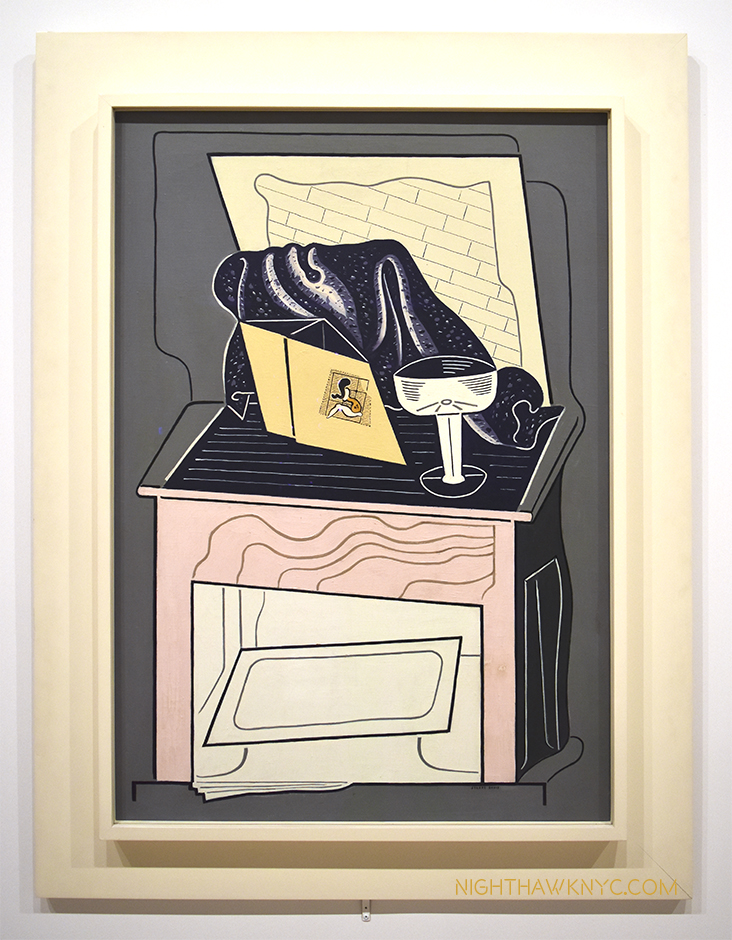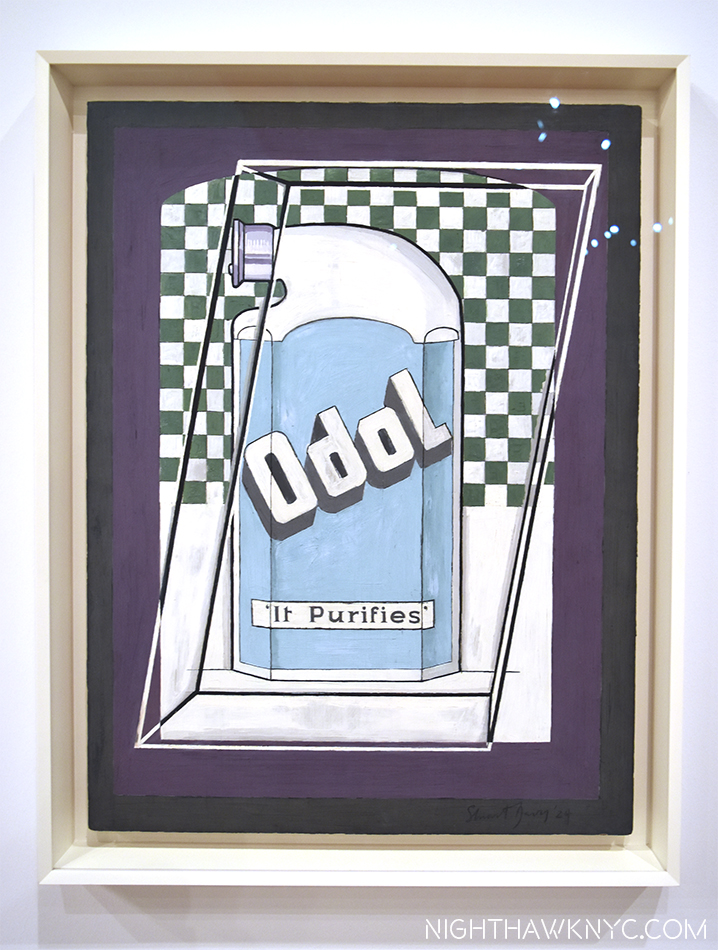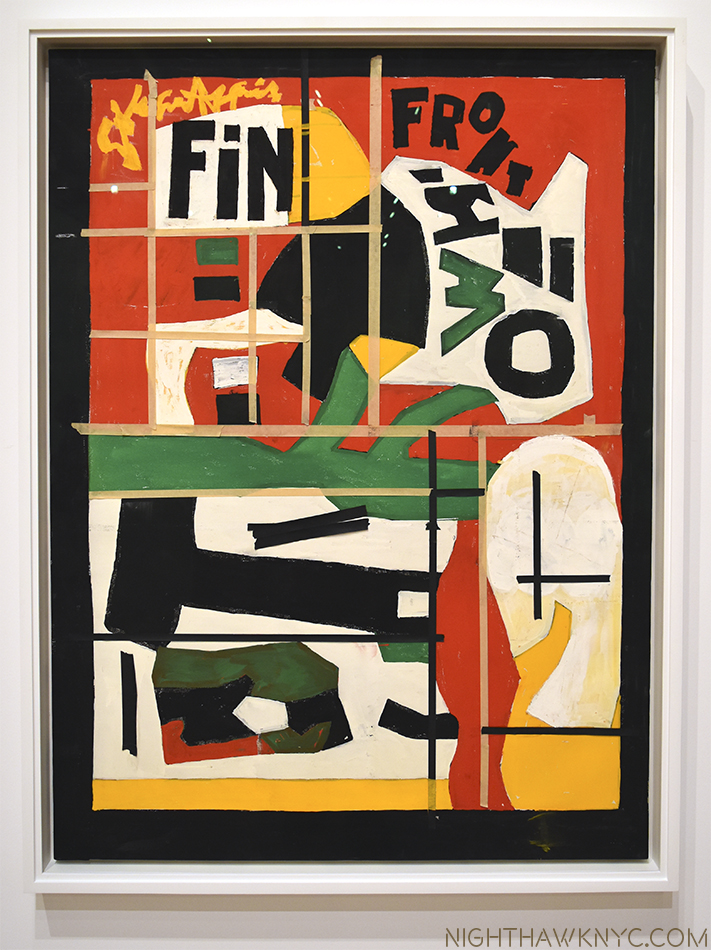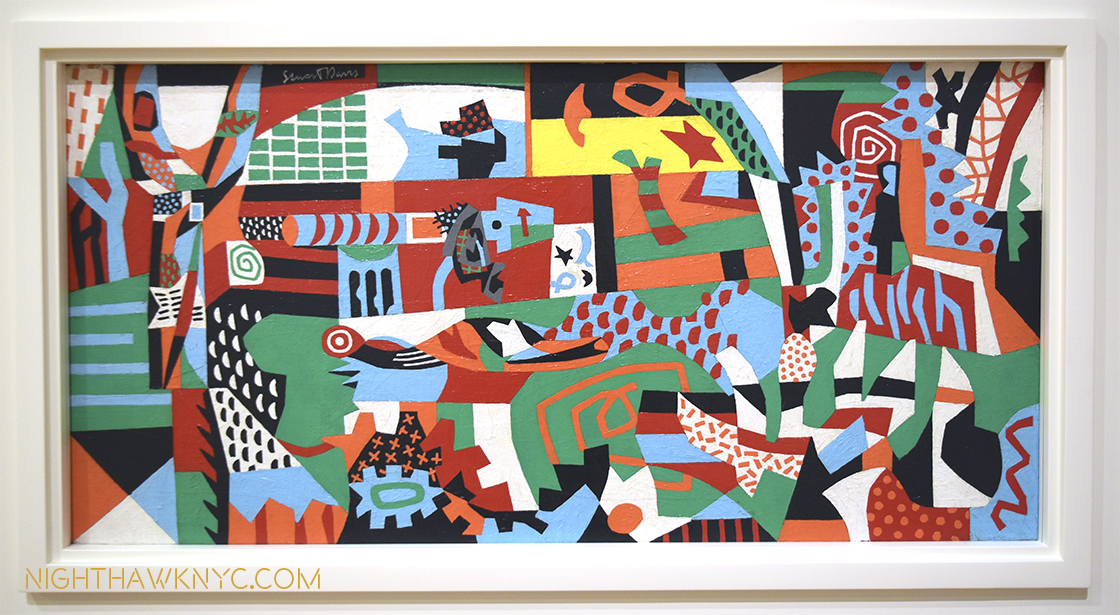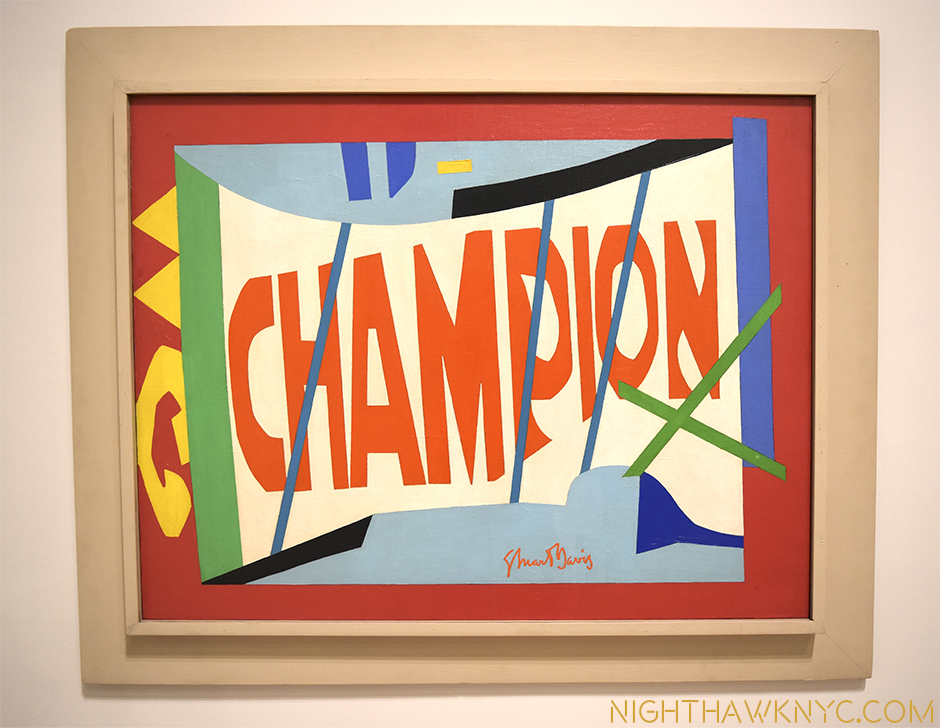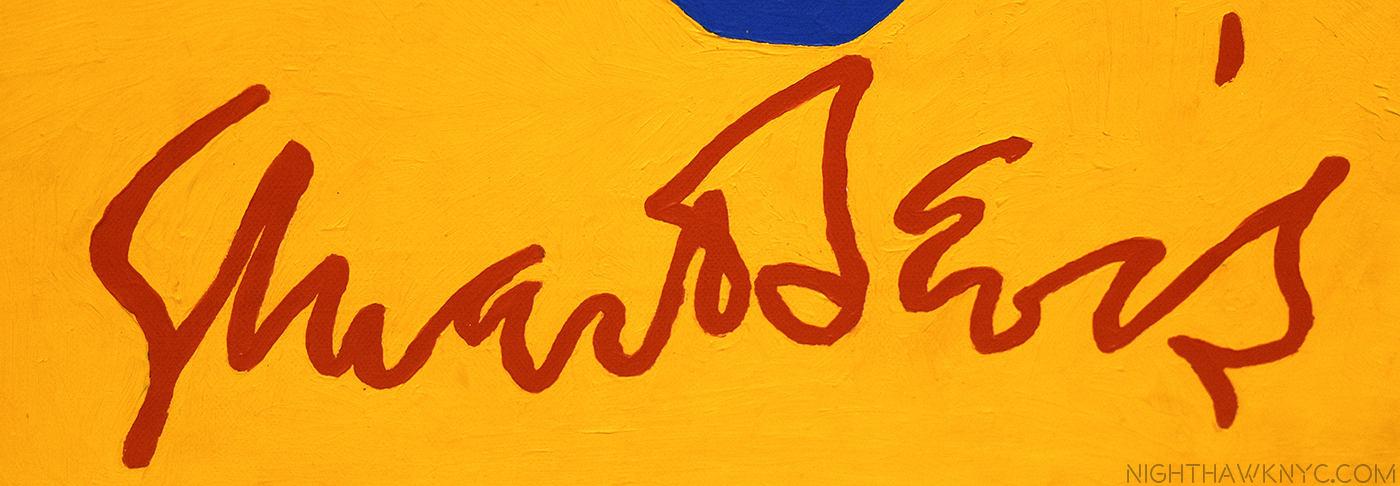Written and Photographed by Kenn Sava (*-unless otherwise credited)
Or rather, of Wayne, I should say. In Jazz, many of the icons are known simply by a one word name…
Duke
Louis
Bird
Trane
Monk
Count
Prez
Fats
Billie
Hawk
Miles
Sonny
Ornette
Cannonball
Jaco
Wayne1
In 85 years of life, as of today, August 25th, 2018, and 59 years of recordings and public performances, he’s earned that level of respect.
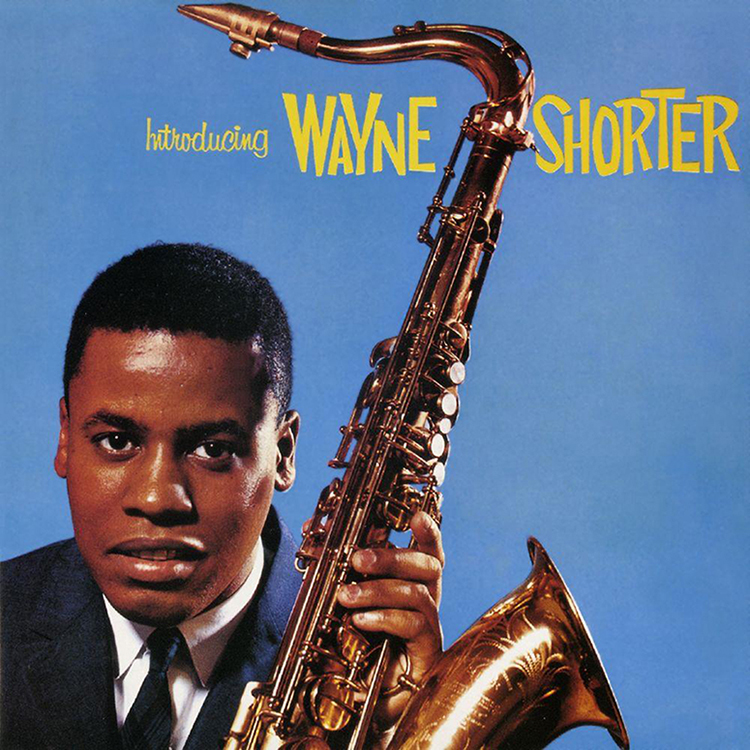
Introducing Wayne Shorter, 1959, Vee-Jay Records, features all original compositions by Wayne (and 1 cover tune), and includes the great Lee Morgan on trumpet. In 1959, Wayne Shorter was better known as “The Newark Flash,” than as “Wayne.” *- Photographer unknown.
Like Picasso, or his one time employer, Miles Davis, Wayne Shorter’s music has never stayed in one place for too long. Whereas Picasso and Miles went off to create whole new styles of Art and Music, over and over again, with Wayne, I think his “periods” show us different sides of his creative self, and the incredibly large range of his vision. Wayne has left his mark in “hard-bop,” with Art Blakey, in helping to revolutionize small group Jazz with Miles, in exploring the boundaries of electric Jazz with Weather Report, and more recently, in revisiting the possibilities of the small group for the 21st century with his Wayne Shorter Quartet. Along the way, he’s also given us a remarkable body of solo albums for Vee-Jay, Blue Note, Columbia, Verve, and for the past 5 years, Blue Note again, as well as appearing as a guest on innumerable great albums, including the legendary Aja by Steely Dan, Don Juan’s Reckless Daughter, and Mingus among others by Joni Mitchell , and Jaco Pastorius’ two classic solo albums. In beginning to assess Wayne’s accomplishment to this point, it’s helpful to break it down to some of the realms it’s been most prominent in.
(Spoiler Alert!) However, I say this, knowing what I will say towards the end of this piece: That given the paucity of records released in this century of his Music a full assessment and appreciation of Wayne Shorter’s Music and accomplishment to this point is, most likely, decades away. The new 3 album/CD Blue Note set Emanon to be released next month NOTwithstanding. It’s only a start in rectifying a terrible situation in my view. Ok. I got ahead of myself…
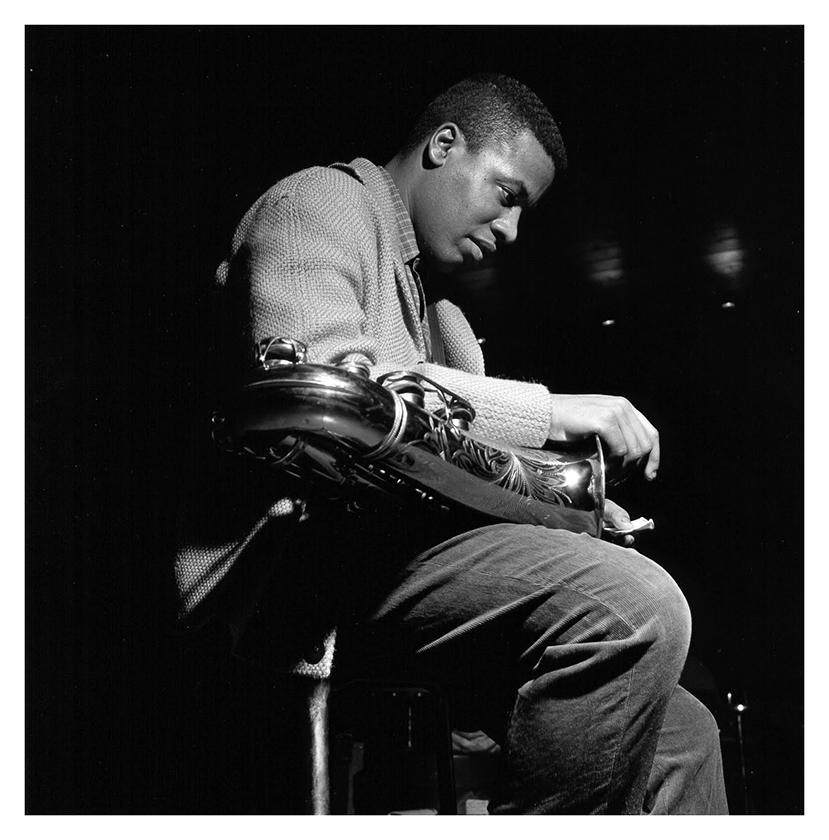
Wayne Shorter at the Village Vanguard, NYC, 1965. *- Photo by Francis Wolff, co-founder of Blue Note Records AND one of the finest Photographers in the history of Jazz.
As a saxophonist, his playing is characterized by three things. First, like Lester “Prez” Young, a major influence on him, Wayne is a Master of using space in his playing. During a solo, silence becomes an integral part of the music. Coincidentally, or not, Miles Davis is, perhaps, the most famous soloist in Music history for his use of silence, and this is a trait that seems to become more and more prominent in Wayne’s playing during his days with Miles (beginning in September, 1964), and ever since. The second defining thing about Wayne’s playing is that he added the distinctive sound of the soprano saxophone, popularized earlier in Jazz by Sidney Bechet, Steve Lacy and Wayne’s friend, John Coltrane (among others), to his standard tenor sax in performances and recording beginning in late 1968, and it quickly became a sound he was identified with. The soprano’s higher range is ideal for cutting through the layers of electronic instruments Wayne was heard with beginning with Miles’ legendary Bitches Brew album and then with Weather Report.
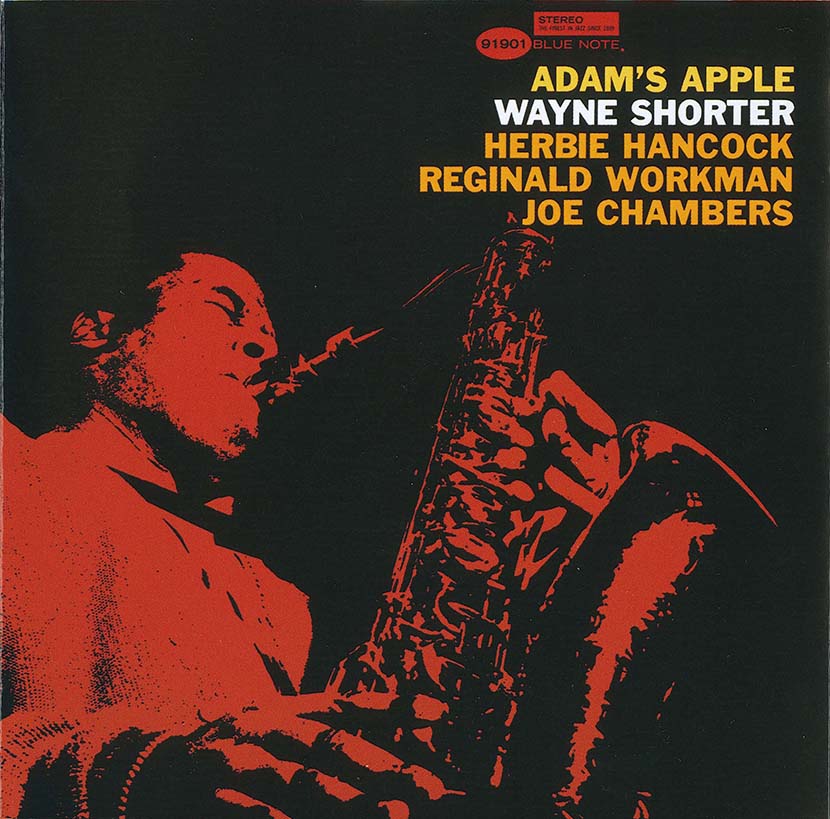
Adam’s Apple, Blue Note, 1966, features his Miles Davis band-mate at the time, Herbie Hancock, who has remained one of his closest friends to this day. *- Blue Note Records Photo.
Third- Jazz soloing is frequently referred to as “spontaneous composing,” When Wayne Shorter plays, his economy creates melodies in his solos that comes closer to that definition than just about anyone else I can think of. Here’s an example of what I mean, Wayne performing his now classic composition Footprints, in 1966 on his Blue Note album, Adam’s Apple, with his long time friend, and former collaborator with Miles Davis, Herbie Hancock, on piano. Wayne plays the melody (also known as the “head” of the composition) twice, then his solo begins at the 1:15 mark. (Sorry. youtube won’t let me embed the video.)
As a composer, who’s Music graces some of the greatest recordings ever made, Wayne Shorter is, likely, to have the longest influence. Many of his compositions have been considered “standards” for decades. Yet, his orchestral and larger ensemble pieces remain either unheard or overlooked. Some of these will finally be heard on disc when Blue Note releases Emanon next month, which will include a whole CD Of Wayne’s orchestral arrangements performed with the Orpheus Chamber Orchestra. Underrated is his accomplishment as a bandleader. His Wayne Shorter Quartet, 2000-ongoing, is high on the list of great Jazz groups of the century.
Then there is his recorded legacy.
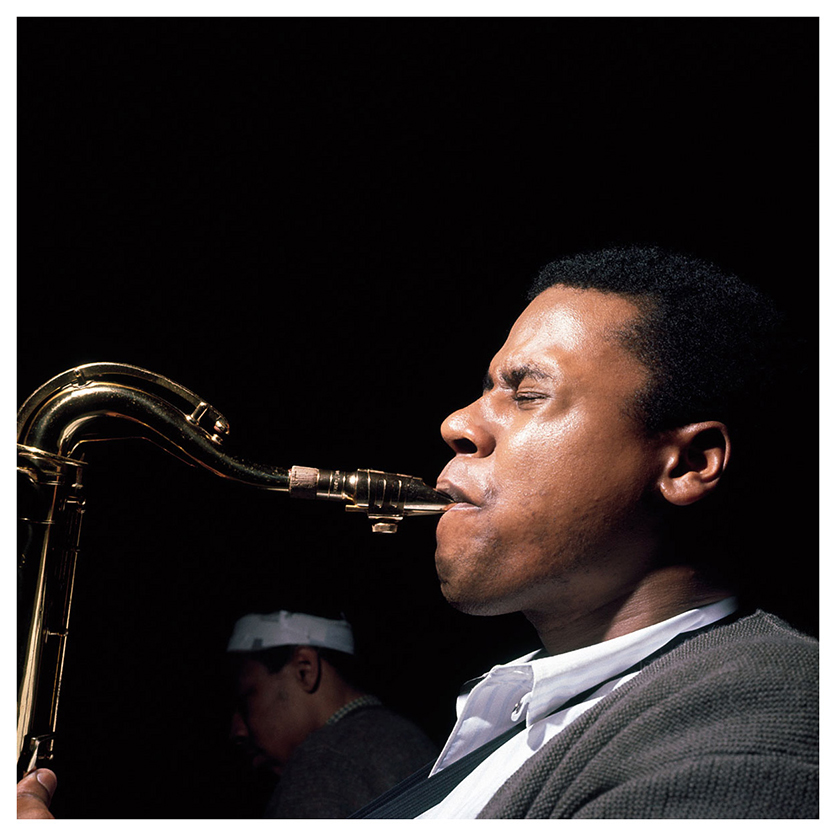
Wayne Shorter with Lee Morgan during Shorter’s Night Dreamer session, Englewood Cliffs NJ, April 29, 1964. *- Photo by Francis Wolff.
The first recorded appearance I can find of Wayne is from July 3, 1959, when at 25, he was a member of the Maynard Ferguson Big Band at that year’s Newport Jazz Festival. Yes, a recording exists! 1959…That’s 2 years before Bob Dylan started performing in NYC. Almost immediately after that concert Art Blakey approached Ferguson trying to pry Wayne from his band. “The Big Band is a bomber,” he told Ferguson. “Wayne is a fighter pilot,” referring to his better suitability for his own small group, Blakey’s Jazz Messengers (usually 5 pieces in those days). Ferguson released Wayne, who immediately flew to join The Messengers in Fort Lick, Indiana. The subsequent five years produced a zenith in the long and storied career of Blakey’s renowned Jazz Messengers and, as much as any other group, served to define the sound of the still popular genre known as “Hard-Bop,” who’s classic grooves (including many by the Messengers), became a favorite source of sampling for “Acid-Jazz” and Hip-Hop in the 1990s.
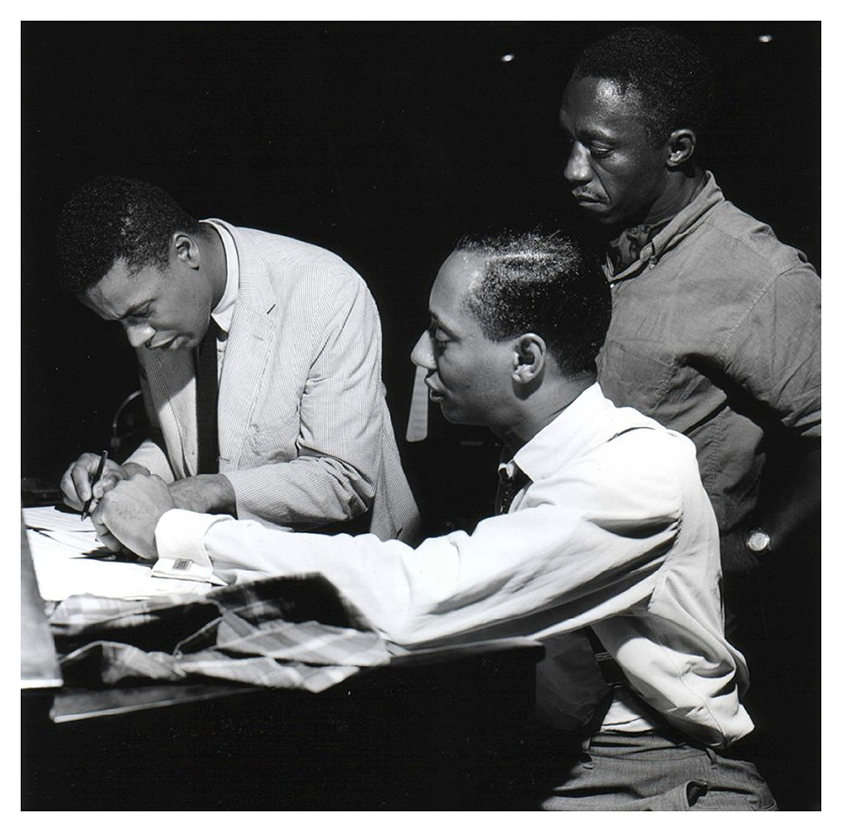
Wayne Shorter, left, quickly became Music Director of the Jazz Messengers, supplying the band with much of its repertoire. He’s shown with bassist Jymie Merrit, and drummer Art Blakey, rear, the leader of the Jazz Messengers, in August, 1960. *-Photo by Francis Wolff
During his Messengers period, he recorded his first solo album, Introducing Wayne Shorter (shown earlier) in November, 1959, and the rest is a history that is STILL being written. The latest chapter, Emanon, to be released next month, a year short of the 60th Anniversary of Introducing, will include a graphic novel, co-written by Mr. Shorter.
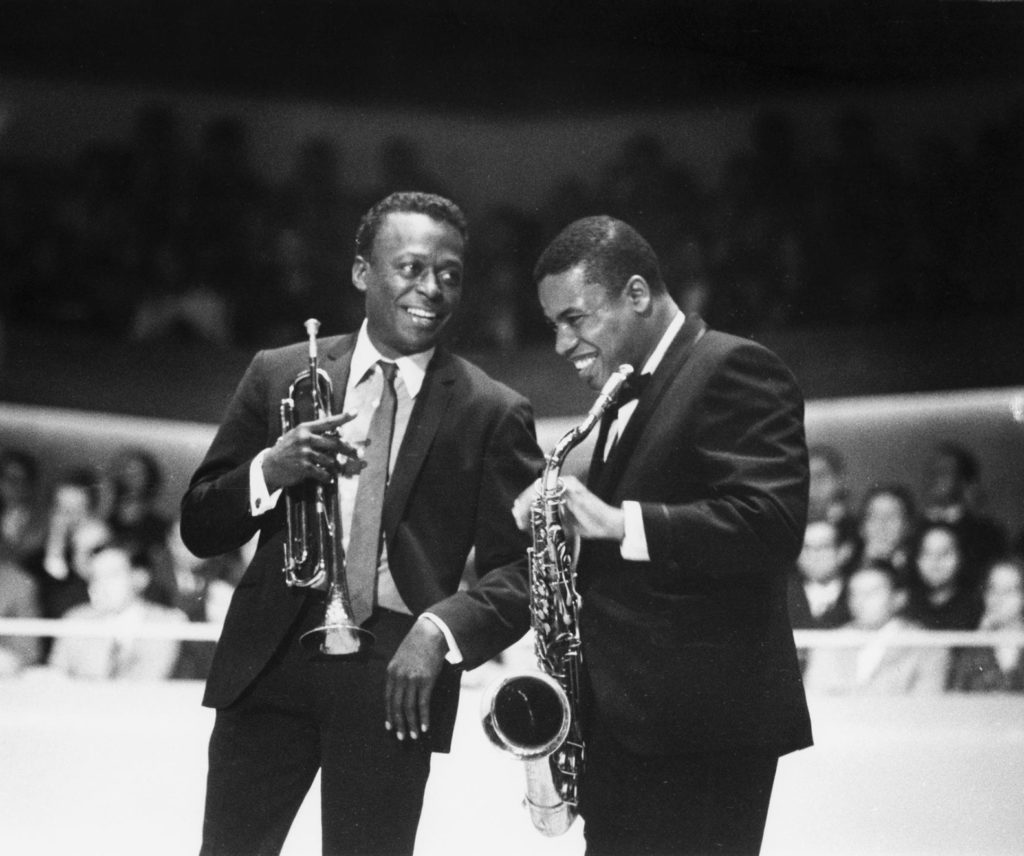
An extremely rare shot of Miles & Wayne both smiling during a live performance by the Miles Davis Quintet. Source- probably a TV Broadcast, most likely in Europe. *- Photographer unknown.
After leaving Blakey, Wayne was hired by Miles Davis in the fall of 1964, completing what was one of the greatest groups in Jazz history- Miles Davis’ mid 1960’s Quintet, aka “Miles Davis’ Second Great Quintet” (from late 1964 through 1968), with Herbie Hancock, piano, Ron Carter on bass and Tony Williams on drums. Wayne proceeded to write yet more songs that are now “standards,” (including “Footprints,” “Orbits,” “Dolores,” “Masqualero,” “Limbo,” “Vonetta,” and “Nefertiti”) for a group that re-wrote what small group interplay could be on the albums Nefertiti, Miles Smiles, Sorcerer, and the aptly named E.S.P., named after another of Wayne’s compositions, to such an extent that it’s never been surpassed, in my opinion, and given the incomparable level of talent among its 5 members, may never be equalled. To my ears, it was a revolution in small group musical performance akin to the creation of Cubism in painting and sculpture by Picasso, Braque & Juan Gris, Miles being something of a “musical Picasso,” who’s career has about as many different periods and styles as the Spanish Master Artist.
As timeless as this music is, Wayne Shorter, like Picasso or Miles, wouldn’t stay in the same place musically for long. His years with Miles, spanning an appearance on the Steve Allen TV Show on September 1, 1964 through March 7, 19702, would be one of the few groups who would change the face of music, particularly small group Jazz.
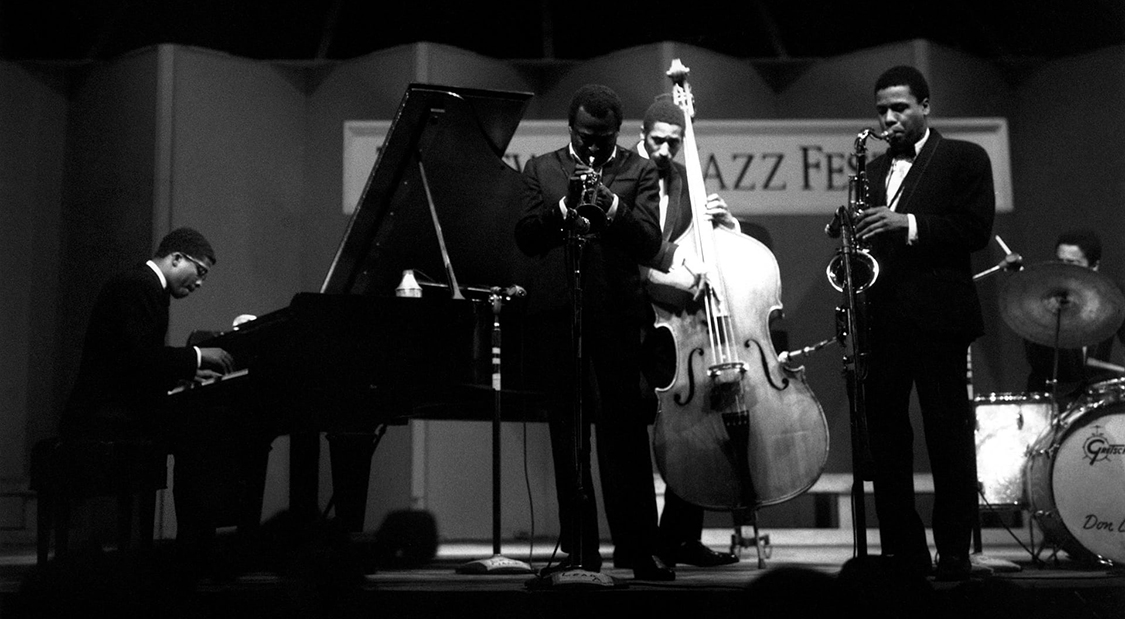
The MDQ live at the Newport Jazz Festival, 1966. *- Photo from the Sony Miles Davis Newport Festival Box Set. Herbie Hancock, Miles, Ron Carter, Wayne, and Tony Williams on drums, left to right. Photographer unknown.
Miles’ First Great Quintet was the group he led featuring the incendiary John Coltrane on Tenor Sax. Wayne and Coltrane were friends who frequently practiced together3. When Coltrane left Miles in 1960 to form his own group, he suggested Wayne to Miles, but at that point, Wayne was playing with Blakey’s Jazz Messengers. John Coltrane, was famous for his “sheets of sound” style, of which Miles once said, “I had seven tenor players, once.” Paired with Miles’ sublime taste and genius for using silence, the two made perfect foils. It’s interesting that as his time with Miles went on, Wayne Shorter almost seemed to take an opposite, “less is more,” approach, almost the opposite of Coltrane’s, adopting a style a bit like Miles himself.
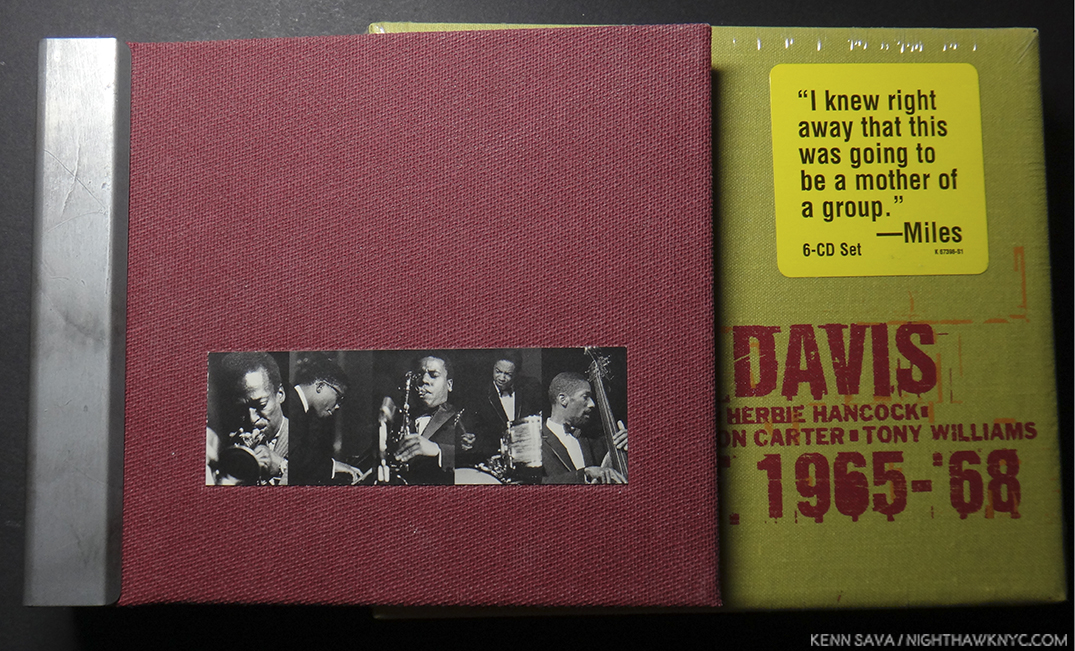
Art in a box. If I were to take five albums with me to that desert island? You’re looking at one: The Complete Recordings of Miles Davis Second Great Quintet.
Whereas Jazz, to that point, had been characterized by improvisation in solos, in the Second Great Quintet, group improvisation, perhaps influenced by the “free Jazz” of the avant garde, revolutionized more mainstream Jazz. Now, every single note this group played together is considered among the essential Jazz recordings ever made. The box set, above, is complemented by another extraordinary box set, “Live at the Plugged Nickel,” which documents a week of performances during which you can actually hear the group in the process of evolving, Miles, himself, had noted that early on in their live career, the rhythm section played differently behind him than it did behind the other soloists in the group, being more daring behind them. He called them out about it, and the results are there to be heard.
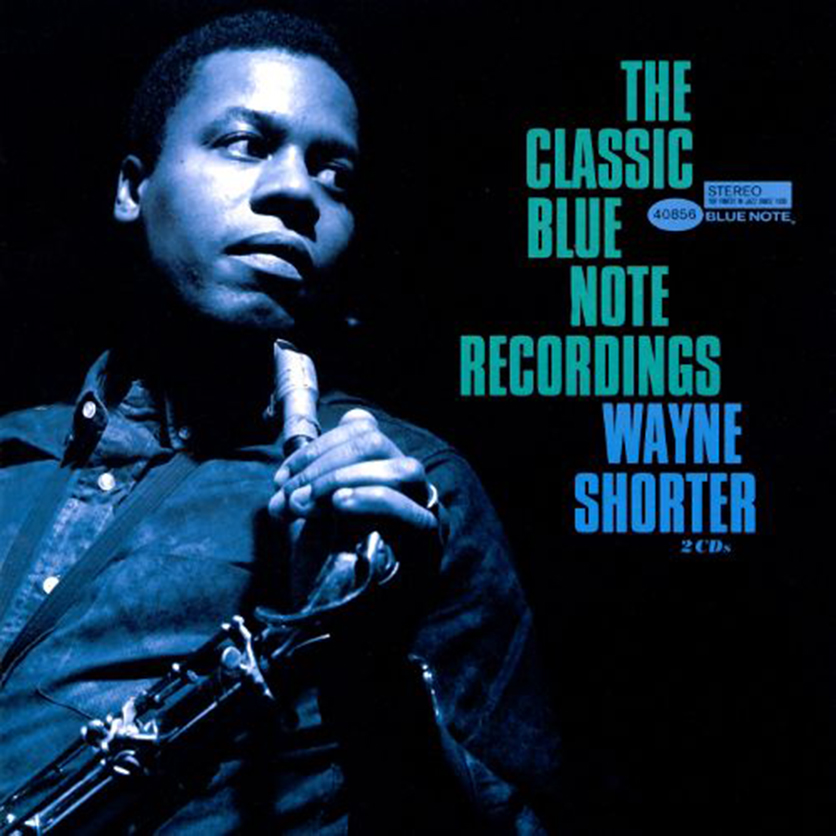
The title of this CD compilation of “greatest hits” from Wayne’s Blue Note period is both true, and an understatement. It’s a great place to start exploring Wayne’s accomplishment. *-Photo by Francis Wolf.
As if all this wasn’t enough, during his time with Miles, Wayne ALSO recorded a string of solo albums for the legendary Blue Note Records label that are now classics, themselves, beginning with 1964’s Night Dreamer. If you haven’t heard it, Juju, Speak No Evil, or the others, I think they’re a great place to start exploring Wayne. He continued to record for Blue Note as a solo artist right up until he left Miles.
On September 20th, 1969, John Lennon announced to the others that he was leaving The Beatles, effectively ending their era. One month before, on August 19th, 1969, Miles began the recording sessions that would mark the beginning of a completely new era in Jazz, creating the bombshell that was and is Bitches Brew, who’s effects and aftereffects revolutionized Jazz and any number of other Musical styles as well. As part of his exploration of electric music, Miles expanded the Quintet. Wayne left in 1970.
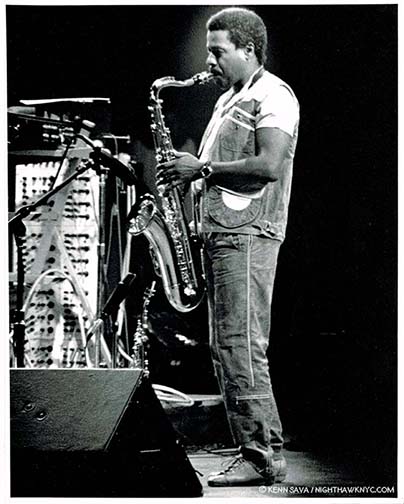
My Photo of Wayne performing with Weather Report at the Palladium, NYC, in the 1980’s next to Joe Zawinul’s keyboard gear.
How to follow being a member of one of the greatest groups in the history of recorded Music? He banded together with another ex-Miles sideman, keyboardist & composer, Joe Zawinul, who he had first played with way back in 1959 with Ferguson!, to co-lead the now legendary group Weather Report. Like its name, the sound of the band changed as often as the weather, or the release of their next album. Unlike the rest of what came to be called “Jazz Fusion,” Weather Report obeyed no formula. Their first 2 albums border on the avant garde. From their third album, Mysterious Traveller, on, they found their stride, and though the rhythm section continually changed (coalescing for a time around the incandescent bass genius, the late, Jaco Pastorius, an acquaintance of mine over the last decade of his life), into a “classic” period.
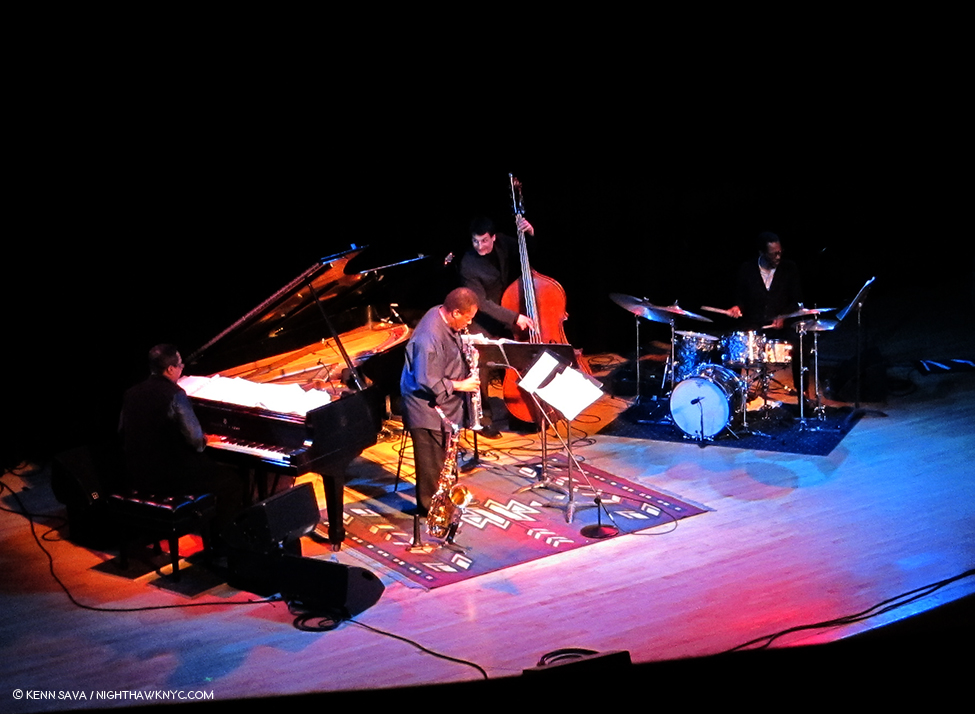
The Wayne Shorter Quartet live at Town Hall, NYC, February, 2011. Wayne is on Soprano Sax, with Danilo Perez (piano), John Patitucci (bass) and Brian Blade (drums).
After Weather Report, possibly inspired by something Miles had said to him about this being his time, Wayne Shorter, finally, became a band leader. And what a band he led! The Wayne Shorter Quartet, consisting of younger masters, Danilo Perez, piano, John Pattitucci, bass, and Brian Blade on drums, dared the seemingly impossible- to follow in the musical footsteps of one of the most daring and innovative acoustic groups in Music history- Miles’ Second Quintet, though with only one horn- Wayne’s. Beginning on September 17, 2000, until the current moment, they have been, to my ears, the first great and important Jazz group of the millennium. Astoundingly, over 18 years of extraordinary performances, only TWO official records have been released by them- 2005’s “Beyond the Sound Barrier,” on Verve, and 2013’s “Without a Net,” on Blue Note, released 49 years after the release of Wayne’s first solo Blue Note album, 1964’s Night Dreamer. Next month, Blue Note will mark Wayne’s 85th by releasing the 3-CD/Lp set by the Wayne Shorter Quartet, Emanon. It’s about time!
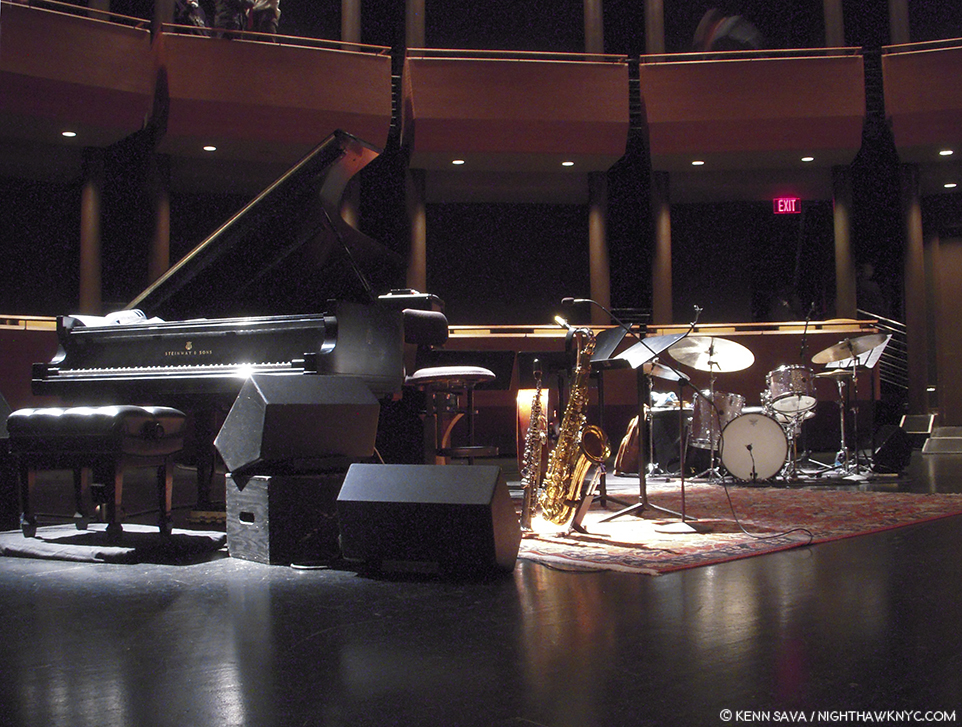
Imagine the sound. Moments before I took this, the Wayne Shorter Quartet had just finished lifting the roof off of Lincoln Center’s Rose Theater in 2012. John Patitucci’s bass rests on its side behind Wayne’s soprano sax. Given the group has been heard on only TWO albums to this point as I write this, “imagining” the sound, range, daring and inventiveness this incomparable group creates each and every time it’s graced the stage over the past 17 years is what we have been left with, and what I was thinking about when I shot this.
As GREAT as his recorded legacy is, the albums represent only one part of it- particularly in documenting the Music of Wayne Shorter in this millennium. Since 2000, there have only been FOUR Wayne Shorter albums released. Meanwhile, he’s been leading one of the most important groups in Jazz, or in any kind of Music, since 2000, the Wayne Shorter Quartet. To date, this group has been heard on only TWO records-2005’s Beyond the Sound Barrier, and 2013’s Without A Net, a titled that perfectly sums up their live performances. In an interview with Joe Lovano (below), Wayne refers to “the mission” of this group, to continue to explore the territory marked out earlier in the Miles Davis Live at the Plugged Nickel recordings. Since their first performance (known to me) at the Monterey Jazz Festival in September, 2000, the Wayne Shorter Quartet has performed hundreds, possibly thousands, of times. With only two albums to their credit, their evolution and accomplishment remains undocumented. The records companies have seriously let the world, posterity and Music history down here. Some of their performances have been recorded and broadcast by various broadcasting companies around the world, and some are traded among collectors4. They help document the development and evolution as well as prove the importance of this group, and serve to make me feel that the failure to completely and fully document them approaches a cultural tragedy. Will some of these recordings continue to leak out, like John Coltrane’s have, 50 years after his passing? How long will it be before the world is able to hear hear it in the depth it deserves to be heard and finally be able to fully assess the accomplishments of the Wayne Shorter Quartet?
Then there are the orchestral pieces Wayne Shorter has written. Some may appear on Emanon, but there have been rumors of others. These have been sparsely, if ever, performed to date, and so it may be a while before we get to hear them. As a result, I write this piece with the caveat that I know that much of the man’s astounding accomplishment remains unheard. I hope I get to hear it before I’m 85.
Finally, Wayne, the survivor, the Buddhist, and student of life, physics, science fiction and the possibilities, has achieved the status of “sage” when he speaks, which is both rare and sparingly, not unlike his sax playing. He’s become something of a “Yogi Berra of Jazz” with his memorable quotes. If you want an extended taste, here’s one of the longest recorded interviews with Wayne, chocked full of incredible recollections, conducted by saxophonist Joe Lovano-
Perhaps my favorite Wayne-ism is his definition of Jazz- “Jazz means I dare you.” Keep that in mind when you listen to him.
As he turns 85 today. I wish Wayne the VERY Happiest of Birthdays!, a heartfelt THANK YOU for your genius and artistry, and many more years of health, life and Art. Congratulations on the long overdue Kennedy Center Honors coming up this fall!
For everyone else, I hope you avail yourself of a chance to go hear him, or listen to his records again soon, and often. There are galaxies to discover and even life lessons to learned from his music. So much so that I believe people will be listening to Wayne for as long as they are born with ears. And then, by “E.S.P” after.
Recommended Wayne-
It’s all good.
Seriously. In fact, I can’t think of many other Musicians who I could say I haven’t heard a “bad” or “uninteresting” recording by. That includes live dates traded by collectors. You may not like the setting, you may prefer acoustic music to electric, etc., but as for Wayne and his playing? It’s always good. That speaks to the integrity of the man as an Artist, and part of the reason so many revere him. If you choose to buy some Wayne from the links below (only), I will receive a small commission. Thanks.
If you’re new to him and want to dip your toe in the Ocean of Wayne, I recommend starting with Classic Blue Note Recordings, a sort of “Greatest Hits” of his Blue Note period, or the Blue Note albums Night Dreamer
, Juju
, or Speak No Evil
. For classic, electric Wayne, get Heavy Weather
by Weather Report. High Life
, on Verve, is a masterpiece in my view, and the most overlooked of Wayne’s classic solo albums. If you want to hear Wayne in the groove, check out Ugetsu
, Free For All
, or Indestructible
by Art Blakey’s Jazz Messengers. To hear Wayne making history with Miles, Nefertiti
, Miles Smiles
, Sorcerer
, and E.S.P.
are impossible for me to choose between, so I’d opt for the box set, The Complete Columbia Studio Recordings Of The Miles Davis Quintet January 1965 To June 1968
, while the live set The Complete Live At The Plugged Nickel 1965
presents the other side of that coin. For the best of the current Wayne Shorter Quartet, as I look forward to Emanon
, Without A Net
, his return to Blue Note is stellar. The title sums up the group’s approach, which you can experience in full effect, here-
*- Soundtrack for this post- “Footprints” by Wayne Shorter and recorded by the Miles Davis Quintet on Miles Smiles.
(UPDATE- My thoughts on Wayne’s passing on March 2nd, 2023 are here.)
NighthawkNYC.com has been Free & Ad-Free for over 7 years, during which over 300 pieces have been published! If you’ve found it useful, I need your support to continue.
I’m pleased to announce you can now support it by buying Art, ArtBooks and PhotoBooks! I’ve curated a selection of 400 books & pieces of Art from my collection, offered through my partnership with eBay seller GallerieK. Featured items of particular interest to my readers may be seen here. The complete selection is here now!
Or, you can donate by PayPal to help keep NighthawkNYC.com online & ad-free below. Thank you!
Written & photographed by Kenn Sava for nighthawknyc.com unless otherwise credited.
Comments, thoughts, feedback or propositions? Click here
Click the white box on the upper right for the archives or to search them.
Subscribe to be notified of new Posts below. Your information will be used for no other purpose.
- In reply to an email- Duke is Edward Kennedy “Duke” Ellington, Louis is Louis Armstrong, Bird is Charlie “Yardbird” or “Bird” Parker, Trane is John Coltrane, Monk is Thelonious Monk, Count is William James “Count” Basie, Prez is Lester Young, ie “The President,” Fats is Thomas “Fats” Waller, Billie the one and only Billie Holliday, Hawk is Coleman Hawkins, Miles is Miles Davis, Sonny is Sonny Rollins, Ornette is Ornette Coleman, Cannonball is Julian “ Cannonball ” Adderley, Jaco is my late acquaintance John Francis Pastorius, and Wayne is the inimitable Wayne Shorter. ↩
- As far as my research shows, these are the first and final appearances Wayne Shorter made as a member of Miles Davis’ groups. ↩
- Wayne speaks about his relationship with John Coltrane among others in the interview/conversation he did with Joe Lovano, posted below. It’s completely enthralling stuff which makes me pray that he’s, also, working on a book or autobiography, though I have never heard rumor to this effect. He does mention in it that John Coltrane kept a diary. That has not yet been made public. ↩
- A list of unreleased, live, Wayne Shorter dates going back to 1959 currently runs to over 200 pages! ↩

